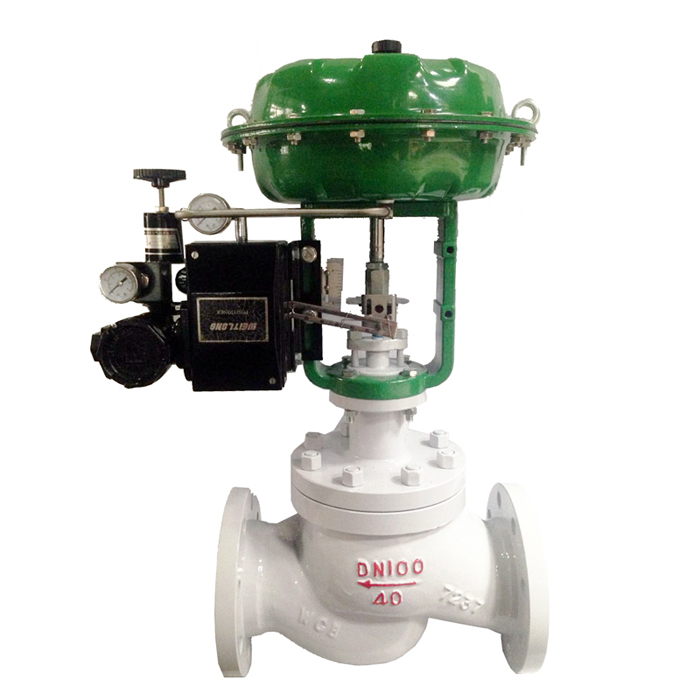Maintenance of diaphragm pneumatic control valve

Pneumatic control valve is one of the widely used instruments in petrochemical enterprises. Its accurate and normal operation is of great significance to ensure the normal operation and safe production of the process equipment. Therefore, it is necessary to strengthen the maintenance of the pneumatic control valve.
I.Key inspection parts during maintenance
Inspection of the inner cavity of valve body: in the case of high pressure difference and corrosive medium, valve inner cavity are often subjected to the impact and corrosion of the medium, and the pressure resistant and corrosion resistant performance must be checked.
Inspection of the valve seat: the inner surface of the thread for fixing the seat is susceptible to corrosion and the seat is slack due to the infiltration of the medium during operation;
Inspection of the valve trim: the valve trim is one of the movable parts of the control valve. It is seriously damaged by the medium. During the inspection, it is necessary to carefully check whether the various parts of the valve trim are corroded and worn, especially in the case of high pressure difference, the cavitation is more serious. The valve trim with serious damage should be replaced. Check the sealing packing of PTFE whether the aging and the mating surface are damaged;
Check if the rubber diaphragm in the actuator is aging and cracked.
II the routine maintenance of pneumatic control valve
When the control valve is made of graphite, the lubricating oil should be added to the packing for about three months to ensure the flexibility of the control valve. If it is found that the packing pressure cap is pressed very low, the packing should be replenished. If the dry PTFE packing is found to be hardened, it should be replaced in time; the operation of the control valve should be paid attention during the inspection, and the valve position indicator and regulator should be checked. Whether the output is consistent; check the air source for the control valve with the positioner, and find the problem in time; always keep the sanitation of the control valve and the completeness and easy use of all components.
III Common faults and causes
(A) The control valve does not work. The symptoms and causes are as follows:
(1). No signal, no air source.
①The air supply is not open,
②Because the air supply water freezes in winter, the air duct is blocked or the packing and the pressure reducing valve are blocked,
③ compressor failure;
④ air supply manifold leakage.
(2). There is a air supply and no signal.
①regulator failure,
②signal tube leakage;
③ positioner bellows leakage;
④ regulation mesh diaphragm damage.
(3). The positioner has no air supply.
①packing blocked;
②failure of pressure relief valve
③ pipe leakage or blockage.
(4) The positioner has a air supply and no output. The orifice of the positioner is blocked.
(5). There is signal, no action.
①spool is detached,
② spool is stuck with the society or with the valve seat;
③ stem is bent or broken;
④ valve seat spool is frozen or coke block dirt;
⑤ actuator spring is rusted due to long-term use.
(B) The operation of the control valve is unstable. The symptoms and causes are as follows:
(1) The air source pressure is unstable.
① The compressor capacity is too small;
② The pressure reducing valve is faulty.
(2) The signal pressure is unstable.
①The time constant of the control system (T=RC) is not appropriate;
②The regulator output is unstable.
(3) The air supply pressure is stable and the signal pressure is stable, but the action of the control valve is still unstable.
①The ball valve of the amplifier in the positioner is not tightly damaged by the dirt, and the output oscillation occurs when the gas consumption is particularly increased;
② the nozzle flapper of the amplifier in the positioner is not parallel, the baffle cover cannot cover the nozzle;
③ output tube The line is leaking;
④ the rigidity of the actuator is too small;
⑤ the frictional resistance in the movement of the valve stem is large, and there is a blockage in the contact part.
(C) Adjust the valve vibration. The symptoms and causes are as follows:
(1) The regulator valve vibrates at any opening.
①support is unstable;
②there is vibration source near;
③ valve core and bushing wear seriously.
(2)The regulator valve vibrates as it approaches the fully closed position. ① The control valve is selected to be large, and is often used at a small opening;
②the flow direction of the single seat valve is opposite to the closing direction.
(D) The action of the control valve is sluggish. The symptoms and causes of dullness are as follows:
(1) The valve stem is slow to operate only in one direction.
①diaphragm breakage leakage in pneumatic diaphragm actuator;
② "O" seal leakage in the actuator.
(2) The valve stem is dull when reciprocating.
①valve body is stuck with glue;
② PTFE packing metamorphic hardening or graphite-asbestos packing lubricating oil drying;
③ packing too tight, friction resistance increases;
④ due to valve stem is not straight, resulting in large frictional resistance; The positioner's pneumatic control valve can also cause slow movements.
(E) The leakage of the control valve is increased. The reasons for the leak are as follows:
(1) The leakage is large when the valve is fully closed.
①The valve core is worn, the internal leakage is serious,
②valves are not adjusted well.
(2)The valve does not reach the fully closed position.
① The pressure difference of the medium is too large, the rigidity of the actuator is small, the valve is not tight;
②the valve has foreign matter; 3 the bush is sintered.
(F) The adjustable flow range becomes smaller. The main reason is that the valve core is corroded and becomes smaller, so that the adjustable minimum flow rate becomes larger.
If you have any question, freely let me know freely via sales@jhflow.com